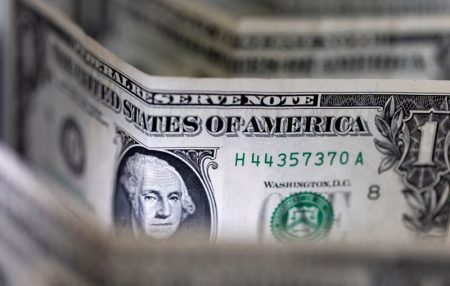By Ira Dugal
BENGALURU (Reuters) -The International Monetary Fund has reclassified India’s “de facto” exchange rate regime to “stabilized arrangement” from “floating” for December 2022 to October 2023 after an article IV review, with the central bank pushing back against the move.
The IMF reclassification followed the Reserve Bank of India’s likely forex interventions where the rupee traded in a “very narrow range, suggesting intervention likely exceeded levels necessary to address disorderly market conditions,” IMF said in the report.
The IMF’s Article IV consultation report reviews a country’s current and medium-term economic policies and outlook.
The IMF’s staff diverged from Indian authorities’ view that “exchange rate stability reflects improvements in India’s external position” and that “foreign exchange interventions have been used to avoid excessive volatility not warranted by fundamentals.”
The RBI strongly believes that such a view is “incorrect” and “unjustified”, the report said. Governor Shaktikanta Das said in October that currency market interventions should not be seen as “black and white.”
The RBI and India’s finance ministry did not immediately respond to requests for comment.
Between December 2022 and October 2023, the rupee traded between 80.88-83.42 against the U.S. dollar. This has since narrowed to 82.90-83.42, with volatility expectations falling to the lowest in over a decade.
“Our view has been that the intervention-led reduction in rupee volatility in recent months has been extraordinary,” said Dhiraj Nim, forex strategist at ANZ.
“While it is anybody’s guess why the RBI prefers such a narrow trading band, it does look to be overdone,” said Nim.
However, apart from building forex reserves, the intervention may also help reduce the currency risk from the central bank’s inflation fight, Nim said.
“Going forward, a flexible exchange rate should act as the first line of defense in absorbing external shocks,” the fund said.
The IMF also projected India’s economy will grow at 6.3% in both the current fiscal year and the next, below the RBI’s forecast of 7% in the current year.
“India has potential for even higher growth, with greater contributions from labor and human capital if comprehensive reforms are implemented,” the IMF said.
Headline inflation is expected to gradually decline to the target although it remains volatile due to food price shocks, it added.
Volatile food prices pushed up retail inflation to 5.55% in November, above the central bank’s target of 4%.
The fund called for India to pursue “ambitious” medium-term consolidation efforts given elevated public debt levels, while welcoming the near-term approach of accelerating capital spending amid a tightening fiscal stance.
The federal government’s fiscal deficit is targeted at 5.9% for the current fiscal year with an aim to bring it down to 4.5% by 2025-26.
Read the full article here















